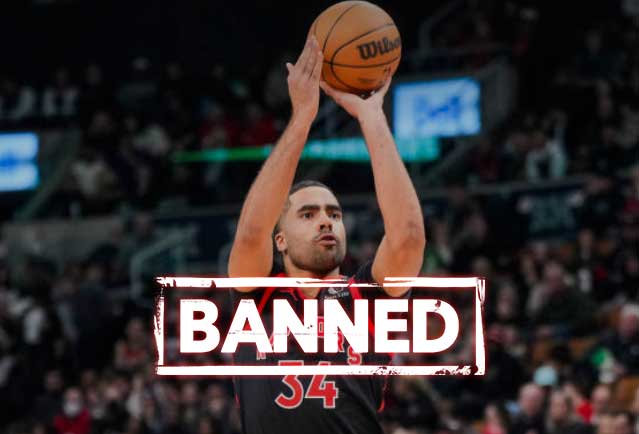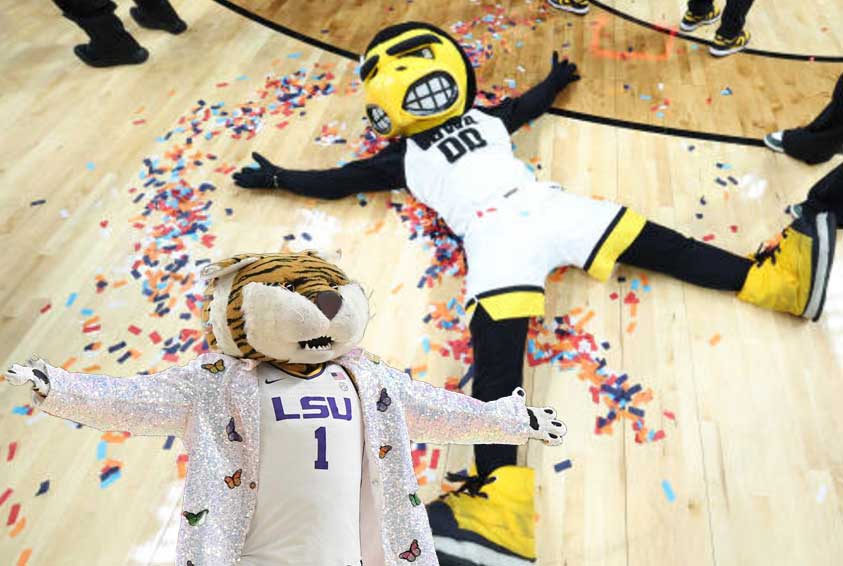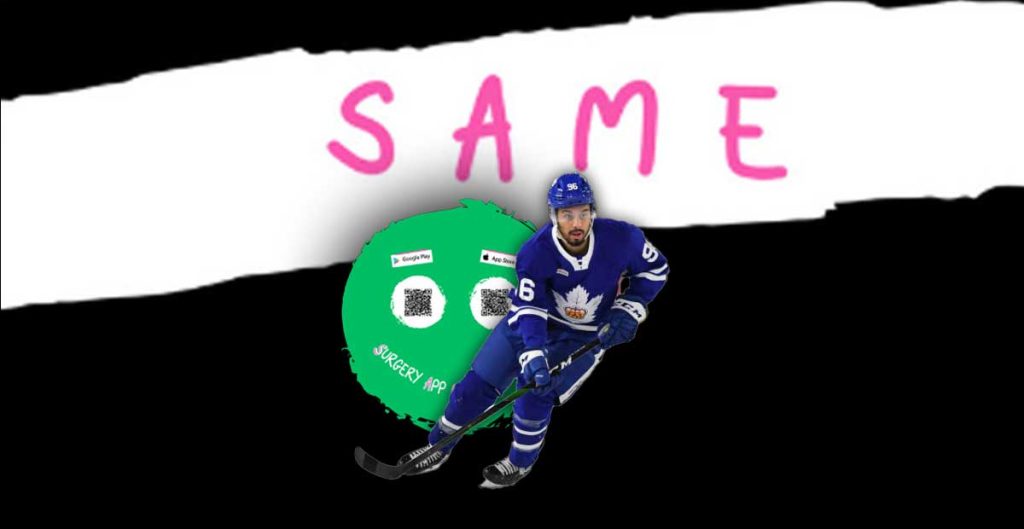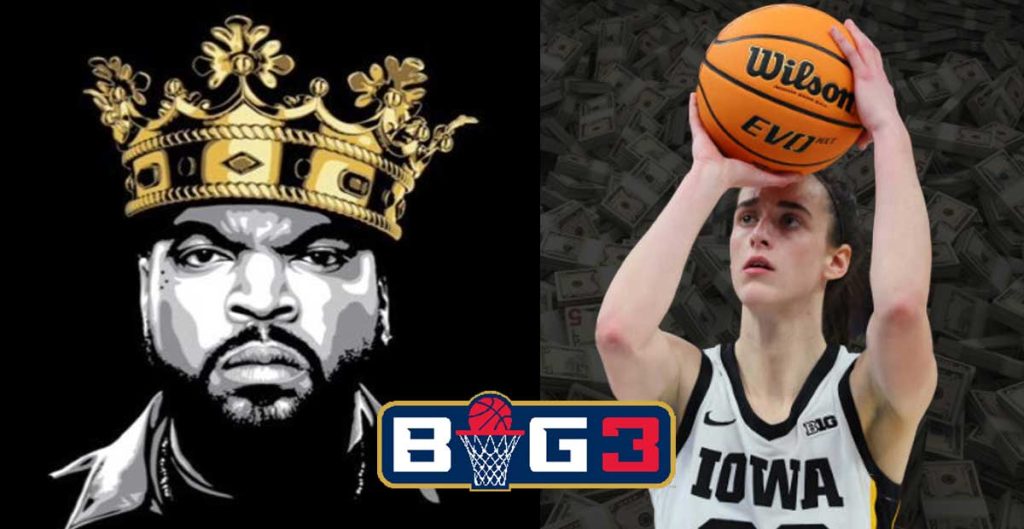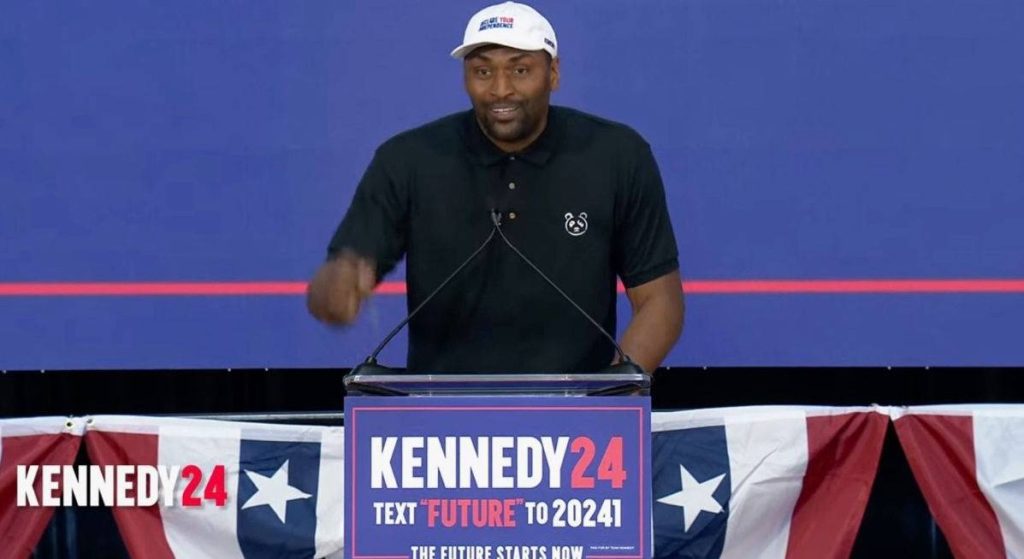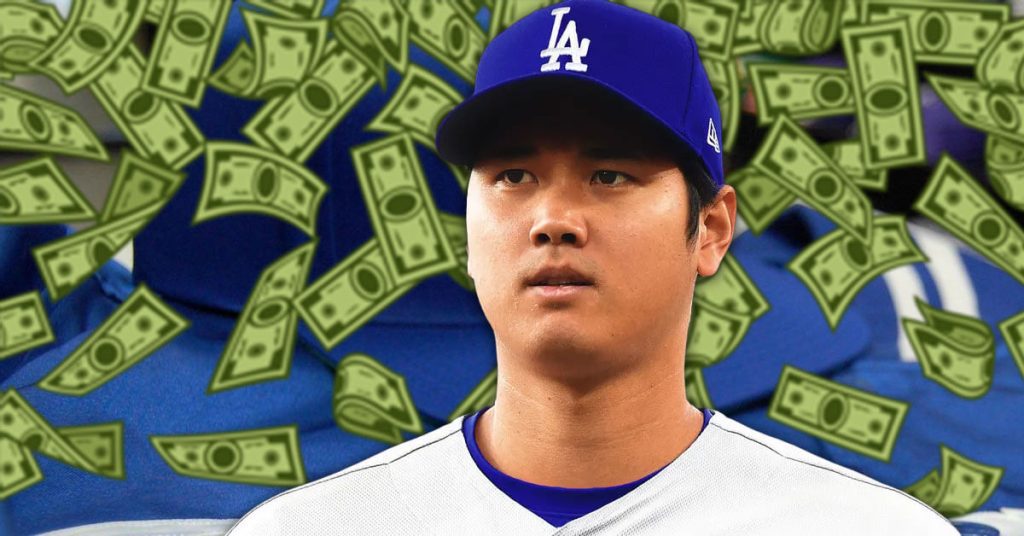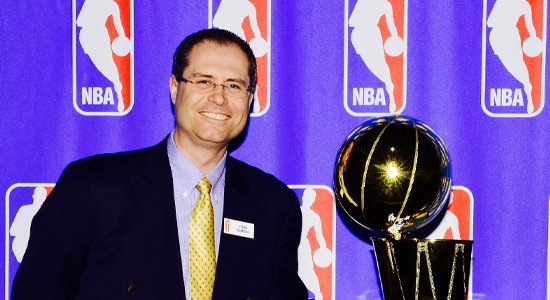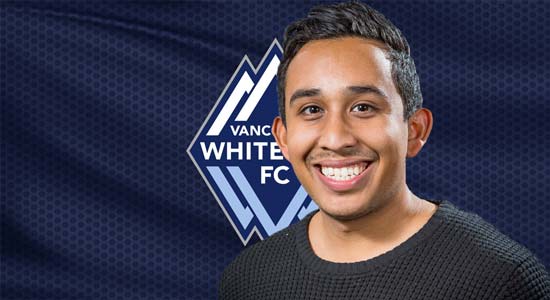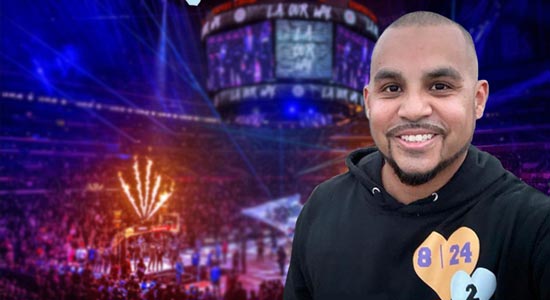
1 on 1 with Daniel Casados | Director of Game Presentation | Los Angeles Clippers

That’s the beauty of our games. We try to cater to the person who’s a true basketball fan, the person who may not care as much about basketball but came to the game to be with their partner and the kid/family who just wants to have fun.
Daniel Casados
Director of Game Presentation
Los Angeles Clippers
The Latest
Jontay Porter Banned From The NBA For Life
Iowa vs LSU: A Landmark Moment in Women’s College Basketball
Former NHLer Josh Ho-Sang Now A Rapper
Metta World Peace Endorses RFK Jr. for President 2024
1Tell us about your role as Director of Game Presentation for the Los Angeles Clippers. What does a typical day look like for you?
The role of the Director of Game Presentation with the LA Clippers is a very busy role but also an enjoyable and gratifying role. The beauty of it is that there is no typical day…and that was before the craziness of 2020.
As the director of our department, I oversee our in-arena presentation, which is anything that is fan-facing and affects the atmosphere and energy inside and outside the arena on a game day. That can include anything from music, graphics, videos, production (pyro, lasers), entertainment teams, the mascot, overall run-of-show, sponsored promotions, video board content, and controlling the overall energy of the arena based on what is going on during the game.
It is a position that requires a lot of planning, attention to detail, scenario management, rehearsal, calm nerves, and communication.
Our team is comprised of about 5 full-time staff members, 5 part-time staff members and 50+ game night staff members.
Ultimately, all those team members fall under me and leading a big team of talented, ambitious and experienced individuals is very gratifying. However, it’s a challenge to manage so many different personalities, especially your game night entertainment team members, but this calls for leadership qualities from both our team and I.
When I say that no day is typical, it’s because it’s true.
We produce 41 regular-season home games, 3 preseason games, and several postseason games. Every one of those games is a different story. Whether it’s the opponent, the theme of the night or the team’s play preceding the game, every one of those games has a different strategy, preparation, and content.
One week, we can have only one home game and one week we can have 4 home games consisting of 3 different themes.
One week, you’re preparing a Christmas halftime production with over 40 entertainers, lights, lasers, fog and props, and the next week you’re consulting with the management teams of 2 hip hop artists who are set to perform at halftime.
One month, you may be preparing for an opening night that has to go off perfectly and another month may be filled with entertainment team auditions during the offseason. All these events/games require a different type of preparation and that’s what makes the job so enjoyable and fulfilling.
However, when we are preparing for an individual game, several details and elements go into it. We must create a run-of-show that covers pregame, in-game, halftime and postgame.
We have 10 mandatory timeouts of 2:30+ minutes that we must schedule content for. We have 15 minutes of halftime to prepare content for. We must decide how long before the game we want to start our “show” depending on when the arena starts to fill up. We must determine how long each individual piece of content is and make it fit into the overall schedule like a puzzle.
Once we’ve put that run-of-show together, we must create a script for every piece of content for our announcers to execute.
This involves working with our sponsor activation and marketing teams to gather correct scripts. Once that’s done, our staff must assign individual tasks to each of our team members to execute. This needs to be communicated seamlessly as we never want anything to fall through the cracks.
We must communicate with our in-arena DJ and audio specialist to discuss music during specific moments so that we create the atmosphere we’re aiming for. Anytime something player-related is executed (intro video, award presentation, player content videos), we must communicate with our Basketball Ops team to make sure we’re executing the way they want our team portrayed.
As you can see, A LOT of communication goes into the preparation of just one game and we do this for 50+ games during a season, so it takes a very well-prepared, detail-oriented yet creative staff.

2Given the year we’ve had thus far, in-game entertainment has significantly changed. Having no fans at games during the 2019-20 NBA season and for the foreseeable future, how are the LA Clippers positioning themselves to create just as much of a game day experience at home for fans?
I will start off by saying that there are obviously still several unknowns going into the foreseeable future. However, during the 2020 NBA Restart, I thought our team did a masterful job of taking the platforms that were given to us and adjusting, which resulted in an experience that our fans latched on to and enjoyed.
Once we executed the virtual fans experience that the NBA provided us with via Microsoft Teams for a few games, we were not satisfied.
Between latency challenges and not being able to mute the feed to interact with our fans during game breaks, we found the experience frustrating the first couple of “home” games. Thus, our IT Director worked with the NBA to get us an exclusive feed that we could take over at any time.
This meant that during timeouts, we could transition away from the television broadcast and provide our virtual fans with our own show.
Once we had that set-up, I worked with our Game Presentation team to put together a robust run-of-show that mirrored what we’d run in-arena with fans.
We used a program called vMix and took all of the existing animations that we used in-arena and uploaded them to vMix.
We evaluated which promotions we could execute on a virtual platform and prepared those promos. We used our office as a home base and brought in 2 of our in-arena hosts to broadcast to our 4-5 virtual rooms we broadcasted to. We added room hosts to each of the rooms we were broadcasting to so that we could successfully execute all our promotions.
We then produced and uploaded several player personality videos and pump videos into the vMix so that we could use those to set the tone for our fans.
We had our mascot and hosts record short reaction videos that we could play after in-game moments (clapping, 3-point goggles, flexing, reactions after questionable calls, funny reactions, etc.). We wanted to connect with our virtual fan base as much as we could.
Once we executed a couple of games like this, we still wanted more buy-in from the fans.
Thus, we solicited some of our more active fans on social media and ran a campaign to form a “fan club” that we termed the “Our Way Crew.” These fans would have to attend every game online, stay for the entirety of the game, wear whatever color we asked them to wear, and follow each of our interactions during the game. This worked wonders!
The end product was a virtual fan base that was much more engaged, and it really showed up in the NBA Bubble in Orlando. During free-throws, you could see our entire sections cohesively doing the same thing. After dunks and 3-pointers, you could see the sections’ energy in Orlando.
We created a very intimate setting where these fans felt like they were at a game, interacting with our hosts, following along with our directions, and we were able to do some things we’re not able to in-arena.
The challenge in the future will be to continue garnering this interest from our fan base.
While it’s not the same thing as sitting in an arena of 20K fans, our goal is to create an environment and experience where our fans feel connected to our organization, feel like they can interact with other fans and in the end, feel compelled to cheer on the Clippers as if they were in an arena.

3Looking to the future, do you see a steady return once fans are able to visit the stadium again? What can teams do to ease any concerns and make it worthwhile to attend games in-person?
I think so.
We’ve already seen fans attend games in cities that are allowed to have fans at their venues.
The fans miss attending games. They miss that game day arena energy. The challenge will be communicating what the arenas and stadiums are doing to keep fans safe once they’re onsite, something that I believe these arenas and stadiums have had suitable time to plan for.
From a Game Presentation perspective, I think:
- We need to continue to strive to give the fans the best experience they can get when they attend a game
- Communicate to the fans (via the video board) what the venue is doing to keep them safe
- Honor and present those on the front line who have stepped up monumentally during such an unprecedented and uncertain time
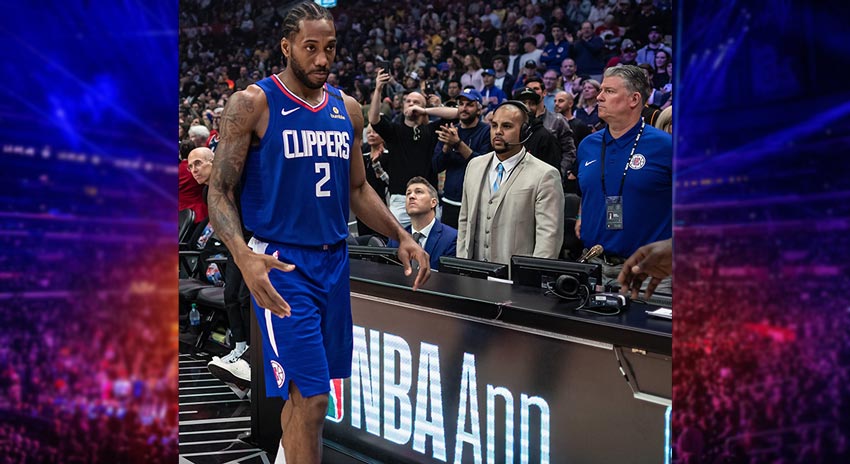
4In a Game Presentation role, there is always a lot going on at once. Sometimes, you may not even be sure who’s winning the game! With that being said, how do you manage all that goes into your role? Additionally, when challenges arise, how do you overcome such?
One of the most important traits but something that you wouldn’t automatically think is needed to succeed in this industry is being calm under pressure.
That takes experience and preparation. Sports are unpredictable...you don’t know what’s going to happen from one moment to another. But once you’ve experienced and seen enough scenarios, the key is to prepare properly. It’s a game of “ifs.” What do I have prepared “if” this happens? What do I have “if” that happens?
There are moments that literally have 3 different potential outcomes and not only do I have to be prepared for each scenario, but I have to make sure that all 3 of those scenarios have been communicated to all our staff and that they know how to execute each option.
I’ve always communicated to my staff that if you prepare properly, you should not be nervous. You should be confident. That’s why we watch recordings of our games and dissect every aspect. That’s why we hold production meetings. That’s why we rehearse. Once we go into a game, it should not be the first time we’re running something or seeing it.
By that time, everyone should have already run through it and seen it enough times to be comfortable executing.
As a game director, being calm under pressure is so important because your team follows whatever vibe you set.
If I’m all over the place and freaking out, that’s going to trickle down. My job is to make everyone comfortable, communicate properly and give everyone the tools beforehand to carry out our show. And if any unpredictable moments occur, I have to trust my experience and instinct and calmly communicate to the team how we’re moving forward.
Working with the Clippers and at STAPLES Center is a challenge in itself.
We use AEG staff in our Control Room during games so communicating our show to individuals who also work Lakers and Kings games is no easy task.
Individuals have habits so it’s a challenge for them to adjust their mindset to what our specific show consists of, especially since it’s so different from the Lakers and Kings.
We also don’t get the rehearsal time that we’d like because our team holds closed practices on the court often on game days and our sales team sells to groups that take the court during the afternoon on a game day.
Because we share the venue with two other teams (not to mention concerts), it’s not always possible to rehearse on a non-game day.
Thus, we must be very efficient with our time on the court and have to be very, very clear with our direction to the control room staff. We must carry out every meeting as if it’s the first time these people are hearing our specific instructions so that we make sure it’s properly ingested. It can be a challenge.
I think the way to combat some of these challenges is by creating positive work relationships with our partner staff from AEG and being a great communicator. I’ve had a vision since I came to LA and it’s my job to properly communicate that vision to everyone and be very specific when something is not in line with that vision.
However, it’s important to also give all individuals the platform to communicate any ideas or challenges they may experience so that we can all work as a team to achieve the overall goal together.
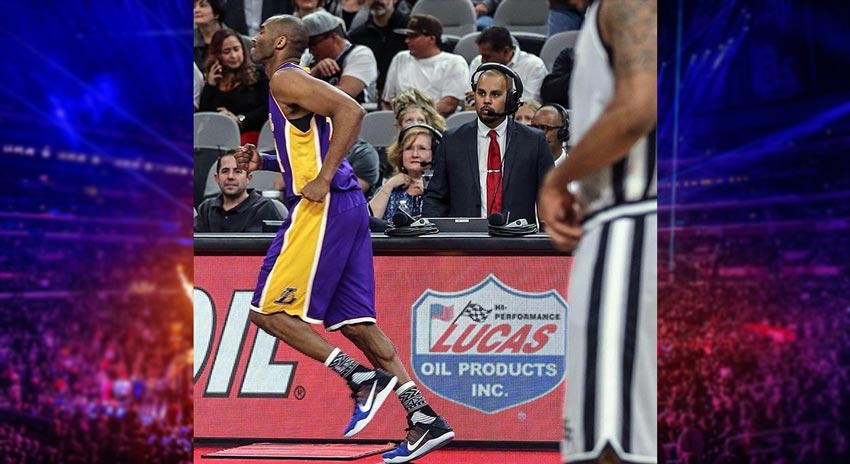
5Fan experience is different to each and every person that attends a sporting event. In an extremely diverse city like Los Angeles, how does the Game Presentation team cater to different demographics?
I think that’s the beauty of our games. We try to cater to the person who’s a true basketball fan, the person who may not care as much about basketball but came to the game to be with their partner and the kid/family who just wants to have fun.
Being in such a diverse city like Los Angeles, we make sure to hold several heritage nights like Filipino Heritage Night, Korean Heritage Night, Chinese Heritage Night, and several more.
These nights bring the flavor of those specific heritages to our arena via music, available merchandise and performing artists. Our Group Sales team does a good job of finding several groups throughout Los Angeles that find these nights entertaining and we tailor our run-of-show to those heritages. It’s become something we’re known for.
There are so many different types of people who attend a game and for different reasons.
For the true NBA fans, we try to provide several stat graphics, whether it’s a specific player matchup, a graphic that sums up our teams’ recent success, or simple in-game stat updates. We know that these things are important to that type of attendee.
We also make sure that our PA Announcer is properly calling the game and communicating what’s being called.
We also try to identify players (via graphics) the first time they enter a game (home or opposing team) to inform and educate young fans. There is so much player movement nowadays, so we try to keep up with that by keeping fans informed of who they are watching.
Then you have the person who’s not that big of a basketball fan but wanted to dress up and attend an event with their friend or their boyfriend/girlfriend.
There is plenty for this demographic to enjoy at a Clippers game. A big part of our games is showing our fans on the video board, whether it’s a dance cam, a kiss cam, a crowd karaoke, or fan-driven promotions.
A person who’s not a big basketball fan can still participate in some of these elements and feel as if they are out at a club or bar, dancing, singing and generally having a good time. It also makes for great content to post on their respective social media accounts.
And finally, we put a big emphasis on family-friendly entertainment. We realize that it’s become harder and harder for a family of 4+ to have the money to attend a game, be patient to get through LA traffic and be able to take their family to a game, buy them food and some merchandise and leave feeling as if they got their money’s worth.
We have a great mascot who caters to the kids.
He’s in the crowd a large portion of the game and is looking for kids to take photos with, sign an autograph for, give away a small item to and generally have an interaction with them.
It’s our job to make memories and in families, we have young kids that we want to turn into lifelong Clippers’ fans. We want them to leave and beg their parents to come back. We want them to get on Instagram and follow our mascot’s account. We want them to rep their Clippers gear at school. We want them to join our youth basketball program. And when that family is sitting around the table at dinner, we want them to say things like “remember when we were at the Clippers game and…”
We understand that these kids are watching our mascots’ every move in between free-throws. We understand that one of our dancers coming by to say hi means everything to them. We understand that them seeing themselves on the video board creates a memory that the entire family will always remember.
And when they leave the game, we want to leave an impression, whether it's them always remembering a song as “the song they play at the Clippers game” or them remembering a specific moment that they experienced at our game.
It’s very important to make sure our overall experience has something for everybody, especially since we have 9 professional teams and two large universities (not to mention all other options in LA) to compete with.

6In your first year with the LA Clippers, you raised the Clippers from 21st to 9th in Game Presentation rankings – an amazing accomplishment! What have you done and are continuing to do in terms of Game Presentation strategy that sets the Clippers apart from other teams in the NBA?
When I first arrived in LA in 2017, there were a couple of things that I wanted to bring to our team.
I came from a San Antonio Spurs team that was the only “big” team in the market so everyone in SA was a diehard Spurs fan. When I first arrived in LA, it was obvious that that wasn’t the case. You had to work for these fans.
The first thing I wanted to do was put together a Game Presentation team that did things the right way.
This individual would work hard, be respectful to everyone, embrace our culture, strive to be the best in the league, think outside the box and push beyond their comfort zone.
When I arrived, I felt like there was a mindset that you can’t get Clippers fans to do certain things, but I quickly realized that our fans just hadn’t been pushed.
They weren’t shown as often as they should on the video board. The music hadn’t been varied enough. We weren’t running many promotions that would involve our fans, and we weren’t really giving our fans a voice.
So, I wanted people on our team that believed this could be done and would take the steps to get it done. We started showing a lot more fan coverage.
My thought was that if fans see other fans up on the board early and often, they know there is a possibility that they could get up there at some point.
Thus, they’re going to interact much more when there is fan coverage. If you start setting that mindset early, slowly you start building a much more interactive and engaged crowd that will benefit you more at the end of a close game.
Next, I wanted to incorporate our fans more into our show.
I wanted them to attend a game feeling as if they had a voice and had some control over the outcome of a promotion, and sometimes, could play a part in the outcome of the game. We started evolving our dance cam to have more variety (kids cam, awkward dad dance cam, mariachi cam, single ladies cam). This gave fans of all different demographics a chance to take part in a portion of the game.
We also started running promotions where a large portion of the fans in the crowd could take part in.
Crowd Karaoke, military moments, section roulette, and a promotion where fans could bat a beach ball onto the court to assist a contestant.
We started running a Fan-of-the-Game promotion where the crowd cheer would determine the winner once we showed them our 2-3 nominees.
Recently, we started running a couple of digital promotions where any fan with a mobile device could participate and see their name on the big board. By doing all of this, we’re communicating to fans that you’re not only coming to watch a game; you’re part of the game.
Lastly, I wanted to create an atmosphere that could have an impact on the actual game.
I’m of the thought that a great game presentation can turn the tide and be responsible for a win or two during the season. In San Antonio, I felt like that was one of my biggest strengths. While we obviously had a large fan base, we used our wonderful mascot and precise timing and audio during games to turn the tide.
When I arrived here, I had to communicate to our staff that while we prepare a run-of-show down to the second, if the game dictates something to change because our team is playing so well, we had to scrap the run-of-show and adjust to keep the atmosphere at a “10.” We also had to have music ready that could be used in any situation.
Going into a timeout after a 10-0 run, coming out of a timeout down 1 with one shot to win the game, coming out of a timeout needing a defensive stop to preserve the win. I wanted our audio to tell a story, create necessary stress, and give our fans chills during big games.
One of the most important aspects of our Game Presentation is that we have management that truly sees the value of our show.
They understand that Game Presentation requires resources and support and I’ve felt that support from Day 1. We’ve made the investments to have the best pyro in the league, to have more lasers every year, to improve our lighting every year, to pay for bigger artists to perform at halftime.
All of this provides value to our fans in a time where people are rightfully very selective of what they are spending their money on.
It hasn’t been easy. It takes work and a lot of communication and preparation. But I think we’ve put the team together that takes it seriously and wants to keep propelling our show.
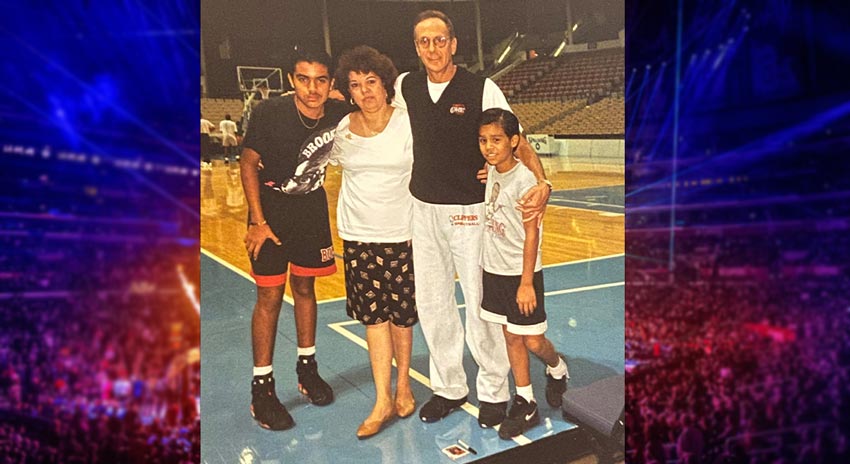
7It is so clear that you value people and have a passion for entertainment. So, why is this factor of sport the most important to you?
You can’t accomplish anything without a team.
I could have a vision, prepare well, and be as creative as I want to be, but if I don’t have a great team with me, it’s not as effective.
As much as my individual successes have meant to me, what means more to me are the relationships I’ve built with the Clippers, the Spurs and around the NBA.
I’m also very proud that several individuals that reported to me at some point have moved on to great positions in the sporting industry.
I put a value in people. You can be as talented as can be, but if you can’t lead, no one is going to follow. I genuinely care for my staff, both at work and outside of work. I have the utmost respect for my staff and take that into consideration with every interaction I have with them. I also put a value on being a good teammate to other departments in our organization or in the NBA. It’s how I was raised. If can help in any way, I’m going to do my best to do so.
I’ve also been raised to treat the head of the company and the person who cleans his/her office the same. Thus, I’m going to have the same respect for the guy collecting the trash in my office as I am the CEO of a company. At the end of the day, we’re all people and I always try to remember that working in this industry.
As far as my passion for entertainment, that started at the age of 7. I have a unique beginning in basketball. As a kid, I used to draw and was also a basketball fan.
One day, I showed one of my drawings of former Spur Sean Elliott to former Spurs coach Larry Brown and he took a liking to my brother and me. He started allowing us to go into the Spurs locker room before games to meet the players, gave us tickets to attend games and generally kept in touch. This brought me into the world of basketball as I know it now.
When I used to attend games as a kid or watch them on NBC, I always noticed the music they’d play during end-of-game timeouts.
I noticed the music and storylines that NBC would introduce a big game with. I was a big stats person.
These are all things that I work with nowadays, so it’s come full circle.
By watching so many games as a kid and watching the wonderful storylines that NBC used to produce around those iconic 90s Bulls teams, I feel that I developed a natural feel and instinct for basketball games.
By knowing what I wanted to see and hear as a fan growing up, I now feel as if I know what to deliver during certain situations to give fans goosebumps and get them engaged.
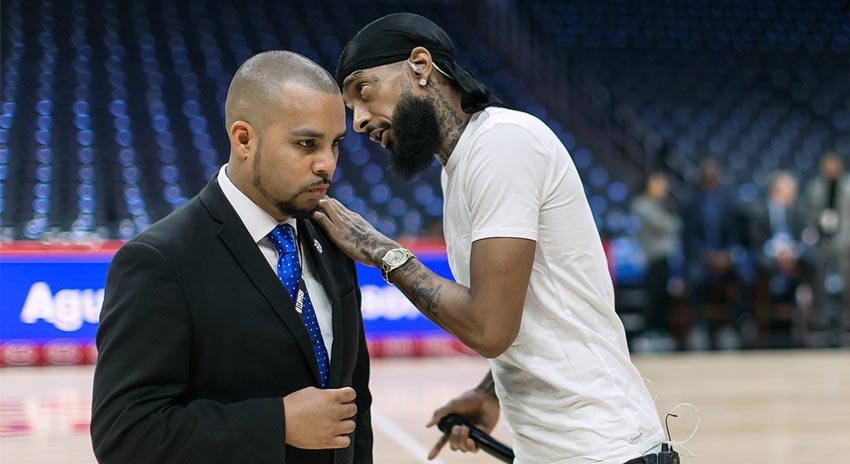
[get_current_post_author_pic_and_name]
As Director of Game Presentation for the Los Angeles Clippers, Daniel Casados strives to put on the best show possible. Arriving in LA after leaving his previous role at the San Antonio Spurs, Daniel made it his mission to create an atmosphere that could very well have an impact on the game. In doing so, he constructed a hard-working, out-the-box thinking Game Presentation team and incorporated fans into the show. With all the hard work, planning and investment that went into Daniel's vision, it is no shocker that the LA Clippers drastically moved up the ranks in NBA Game Presentation! It is clear that Daniel has an immense passion for not only his job but, for the fan experience. The game-day experience is one that differs from person to person. However, Daniel emphasizing catering to all. There is something for everybody at LA Clippers games and Daniel holds the key!


